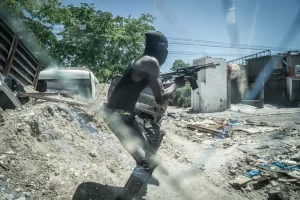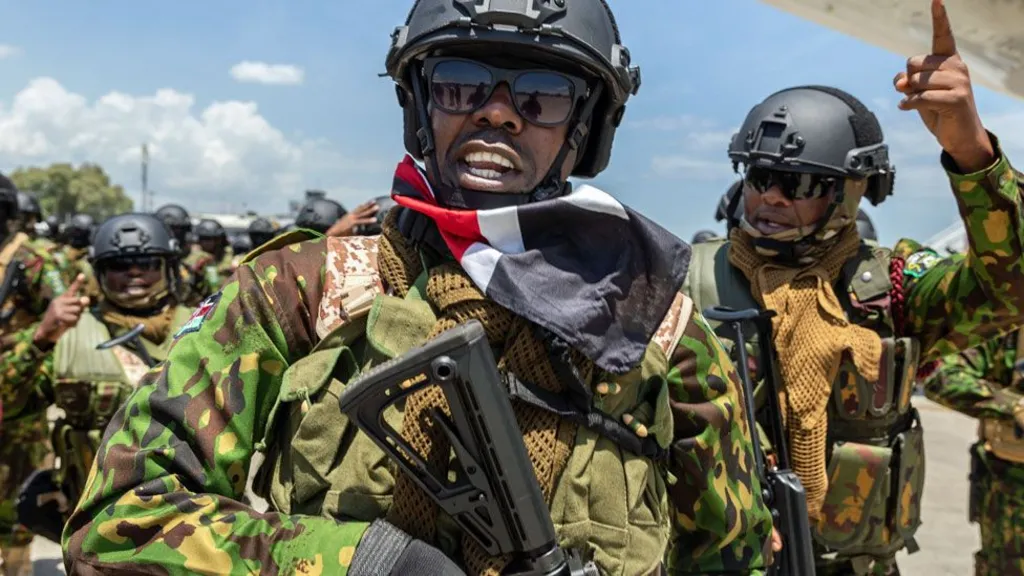The Kenyan contingent has already experienced its first casualty since arriving in Haiti.
On 30 July, a Kenyan policeman received a gunshot injury in the shoulder in Port-au-Prince when a Kenyan patrol engaged gang members.
That same day, the Haitian police chief Rameau Normil, accompanied by the Kenyan force commander Godfrey Otunge, appeared to try to counter unfavourable local media commentary by announcing that more than 100 “bandits” had been killed by the Haitian and Kenyan police in operations conducted under a state of emergency declared in the most gang-plagued zones since mid-July.
Such statements however have not succeeded in placating public scepticism.
Confidence was not improved by the publication online of videos showing top Haitian government officials, as well as Kenyan and Haitian police escorting them, making a hasty retreat on 29 July, amid a barrage of gunfire, from the abandoned General Hospital in downtown Port-au-Prince they had just visited.
Both Haitian and Kenyan police had said this facility was firmly under their control.
Despite such criticism Haiti’s interim Prime Minister Garry Conille told BBC HARDtalk he welcomed the support given how undermanned the Haitian police are.
“We do need the help… yet it’s coming in too slow and Haitians are growing impatient,” he acknowledged.
The prime minister also batted off those who questioned the deployment of Kenyan officers given their heavy-handed handling of recent anti-government riots at home.
“The respect for our laws and operational procedures have been very very good and we’re very happy with the accompaniment we’re receiving,” he said, emphasising that the role of the Kenyans was to support and accompany the police – not operate independently.
Nonetheless the Kenyans have faced open defiance from prominent Haitian gang leaders.
Only days after the arrival of the first group of Kenyans, Jimmy “Barbecue” Chérizier, an outspoken leader of the “Viv Ansanm” (Live Together) gangs coalition, appeared in a provocative video lasting almost eight minutes that was posted on X.
Leading his masked foot soldiers in a strutting, chanting war dance through his Delmas 6 stronghold, they held their automatic weapons aloft.
“Here’s Kenya [the Kenyans], bullets [for them],” they chanted in Creole at one point.
Other gang leaders, including Wilson “Lanmo Sanjou” Joseph, the boss of the “400 Mawozo” gang, and youthful gang chief “Ti Bebe Bougoy”, have also been appearing in videos taunting both Haitian authorities and the Kenyans, while the gangs continue to boast of their attacks.
In mid-July, the Kenyan contingent of the multi-national force launched their own X account, @MSSMHaiti, in a bid to set the tone of the public narrative of their mission in Haiti.
Its daily reports on the Kenyans’ activities range from receiving visiting dignitaries at their base, to human rights lessons, and upbeat accounts of “reassurance” patrols on the streets of Port-au-Prince.
But the determined optimism of the @MSSMHaiti stream, particularly references to “significant success” and “gradual return to normalcy”, appears to have rankled many in Haiti.
Some Haitians have denounced the Kenyan reports as, at best, overblown – and, at worst, “propaganda”.

